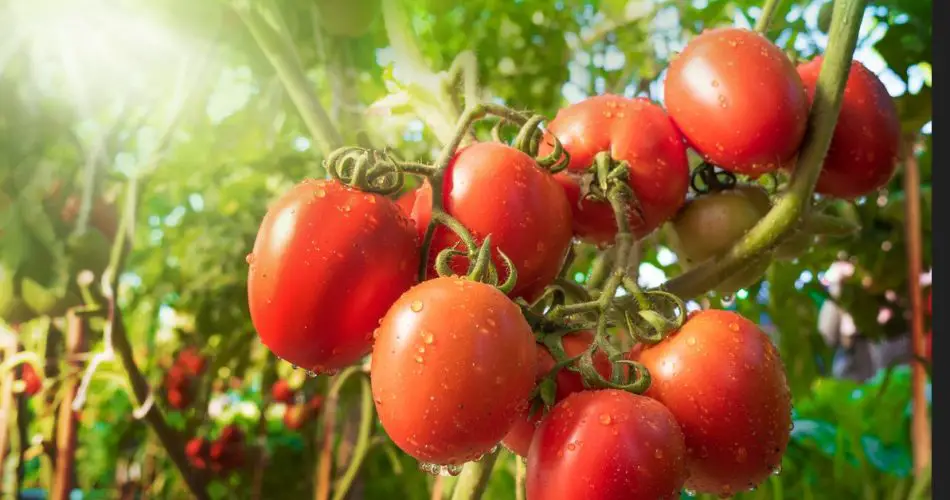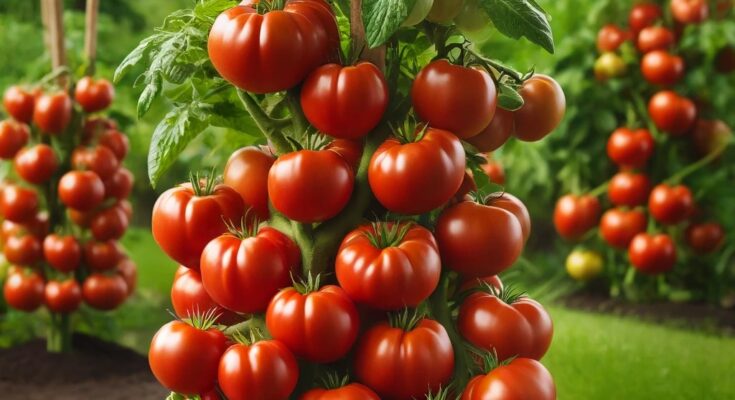
20 Mistakes That Can Destroy Your Tomato Harvest
Growing tomatoes can be a rewarding endeavor, but it’s not without its challenges. Here are 20 common mistakes that can ruin your tomato harvest and how to avoid them.
- Planting Too Early
- Tomatoes are sensitive to cold. Planting them before the last frost can stunt their growth or kill young plants. Ensure the soil is warm enough (above 60°F) before planting.
- Poor Soil Preparation
- Tomatoes need rich, well-draining soil. Failing to prepare your soil with compost or organic matter can lead to poor growth. Test and amend your soil before planting.
- Incorrect Spacing
- Overcrowding can restrict airflow and increase the risk of diseases. Space your plants at least 18-24 inches apart to ensure they have room to grow.
- Inadequate Sunlight
- Tomatoes require at least 6-8 hours of direct sunlight daily. Planting them in a shaded area will result in poor fruit production.
- Overwatering
- While tomatoes need consistent moisture, too much water can cause root rot and other issues. Water deeply but infrequently, allowing the soil to dry out between waterings.
- Underwatering
- Conversely, not providing enough water can stress the plants and reduce yield. Monitor soil moisture and water when the top inch of soil feels dry.
- Improper Mulching
- Mulching helps retain soil moisture and regulate temperature. However, using too much or the wrong type of mulch can harbor pests and diseases. Use organic mulch like straw or grass clippings.
- Not Staking or Caging
- Tomato plants need support to keep the fruit off the ground and prevent diseases. Use stakes, cages, or trellises to support your plants as they grow.
- Ignoring Pest Control
- Pests like aphids, hornworms, and whiteflies can decimate your tomato plants. Regularly inspect your plants and use organic or chemical controls as needed.
- Neglecting Disease Prevention
- Diseases such as blight and mildew can spread quickly. Rotate crops, use disease-resistant varieties, and remove affected plants promptly.
- Using Too Much Fertilizer
- Over-fertilizing, especially with nitrogen, can lead to lush foliage but few fruits. Use a balanced fertilizer and follow the recommended application rates.
- Not Pruning Properly
- Pruning helps improve airflow and reduce disease risk. Remove suckers (the small shoots that grow between the stem and branches) to focus energy on fruit production.
- Ignoring Soil pH
- Tomatoes prefer slightly acidic soil with a pH of 6.0-6.8. Test your soil and amend it with lime or sulfur to adjust the pH if necessary.
- Planting in the Same Spot Every Year
- Crop rotation helps prevent soil-borne diseases and pest buildup. Avoid planting tomatoes in the same spot more than once every three years.
- Failing to Harden Off Seedlings
- If starting tomatoes indoors, gradually acclimate them to outdoor conditions before transplanting. This process, known as hardening off, helps prevent transplant shock.
- Skipping Companion Planting
- Companion plants like basil, marigold, and garlic can help deter pests and improve growth. Incorporate them into your tomato garden for better results.
- Harvesting Too Early or Too Late
- Harvest tomatoes when they are fully ripe but still firm. Picking too early results in less flavor, while leaving them too long on the vine can lead to cracking or pest damage.
- Ignoring Weather Conditions
- Extreme weather can stress tomato plants. Provide shade during heatwaves and protect them from heavy rain or hail.
- Not Using Disease-Resistant Varieties
- Choose tomato varieties that are resistant to common diseases in your area. This can greatly reduce the likelihood of crop loss due to disease.
- Neglecting Regular Maintenance
- Regularly check your plants for signs of stress, pests, and diseases. Prompt intervention can save your harvest.
By avoiding these common mistakes, you can significantly improve your chances of a bountiful tomato harvest. Happy gardening!



